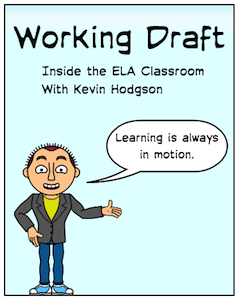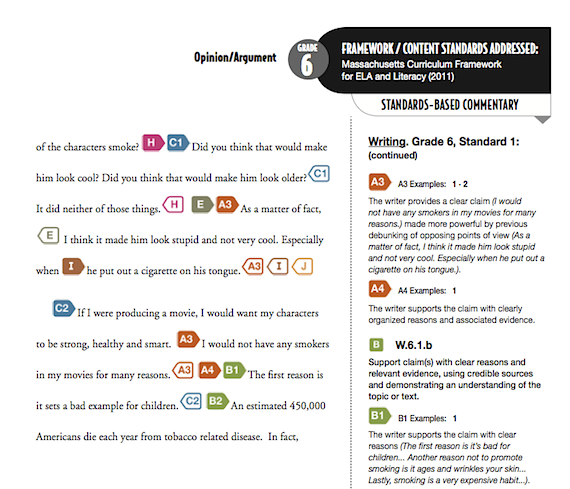My State Gets Writing Support Right
A MiddleWeb Blog
The Department of Education in my state of Massachusetts has published a series of helpful tools and resources to assist teachers in looking at student writing through the lens of our ELA Curriculum Standards (i.e., the Common Core).
The set of materials is known as Writing in Action. The resource opens with this fundamental question: What does good student writing look like?
Now here is a question that I ponder all the time as a teacher of young writers, including many who struggle with the written word. The Writing in Action collection seeks to answer that question, or at least provide some guidance, through an annotated and coded look at some student writing across grade levels and genres.
This developing collection has been useful, allowing me to read through pieces of student exemplary work and dive into the comments of teachers and state-level educators in the margins of the writing. I’m also able to notice places where students’ work connects to the ELA frameworks.
The annotations are color-coded and letter-coded along different frames of view. I appreciate that the teacher’s lesson plan, pre-teaching and resources are also available with each student sample. This is a good model of useful close reading for teachers. (Note: You don’t have to be a Massachusetts teacher to see this collection – it’s publicly available on the internet.)
This kind of resource is also valuable for us teachers on yet another level. We’re all wondering what the state is expecting to see from our students when we move from our current standardized testing system (MCAS: Massachusetts Comprehensive Assessment System) to the next wave of assessment (the national PARCC: Partnership for Assessment of Readiness for College and Career). Here, the state is giving us a heads up on the quality of writing that students at different levels should strive for. We’d be remiss not to at least examine those expectations.
A useful resource most anywhere
I suspect this kind of resource would be valuable in whatever state you happen to teach and — given the push to incorporate writing in all content areas — whatever subject you happen to teach, too. Not every genre (argument, narrative, information) is represented in every grade level yet, but there is enough here to at least do some close reading of this student sample work, and then turn the lens on your own students.
I haven’t done this kind of deep reading and annotating of my students’ writing — of making what they’re writing so visible to my analytical eye. But I can see the value of such a move, particularly as a way to show students what my own expectations are for their level of writing on a particular assignment.
I am almost loathe to admit it, given the often-tense relationship between classroom teachers and state officials, but my state Department of Education may have inspired me in a new direction as teacher with this Writing in Action initiative. Kudos to them.





































